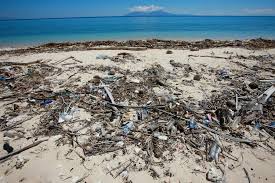A mass extinction which played a role in the development of human life hundreds of millions of years ago may have been caused by climate change damaging the ozone layer, according to research.
Scientists have found a major extinction event in the Late Devonian period could have been sparked by a “catastrophic thinning of the ozone layer” which allowed damaging levels of ultraviolet radiation to reach Earth.
The University of Southampton scientists analysed evidence from fossilised plants before and after the extinction event which showed what was happening in the atmosphere at the time.
This appears to have caused a number of important plant groups to quickly become extinct and led to the collapse of the forest ecosystem, disrupting other plant groups and creating a different ecosystem in the process.
Professor Marshall said other scientists had shown high temperatures could increase the transportation of water vapour which carries carbon compounds such as chlorine higher into the atmosphere.
These compounds then help to break down ozone molecules once they near the ozone layer.
“This produces a positive feedback loop because a collapsing terrestrial ecosystem will release a flush of nutrients into the oceans, which can cause a rapid increase in algae. So the more the ozone layer is damaged, the more plants die, and the more ozone-damaging compounds are released,” Professor Marshall said.
He added: “Later on, the ozone layer will naturally recover as the climate cools and the algae helps remove carbon dioxide from the atmosphere.”
Professor Marshall said his team believed there should now be a focused effort on understanding the links between global warming and the production and atmospheric transport of carbon compounds which can have a potentially damaging effect on the ozone layer.
The Independent
 Lebanese Ministry of Information
Lebanese Ministry of Information



